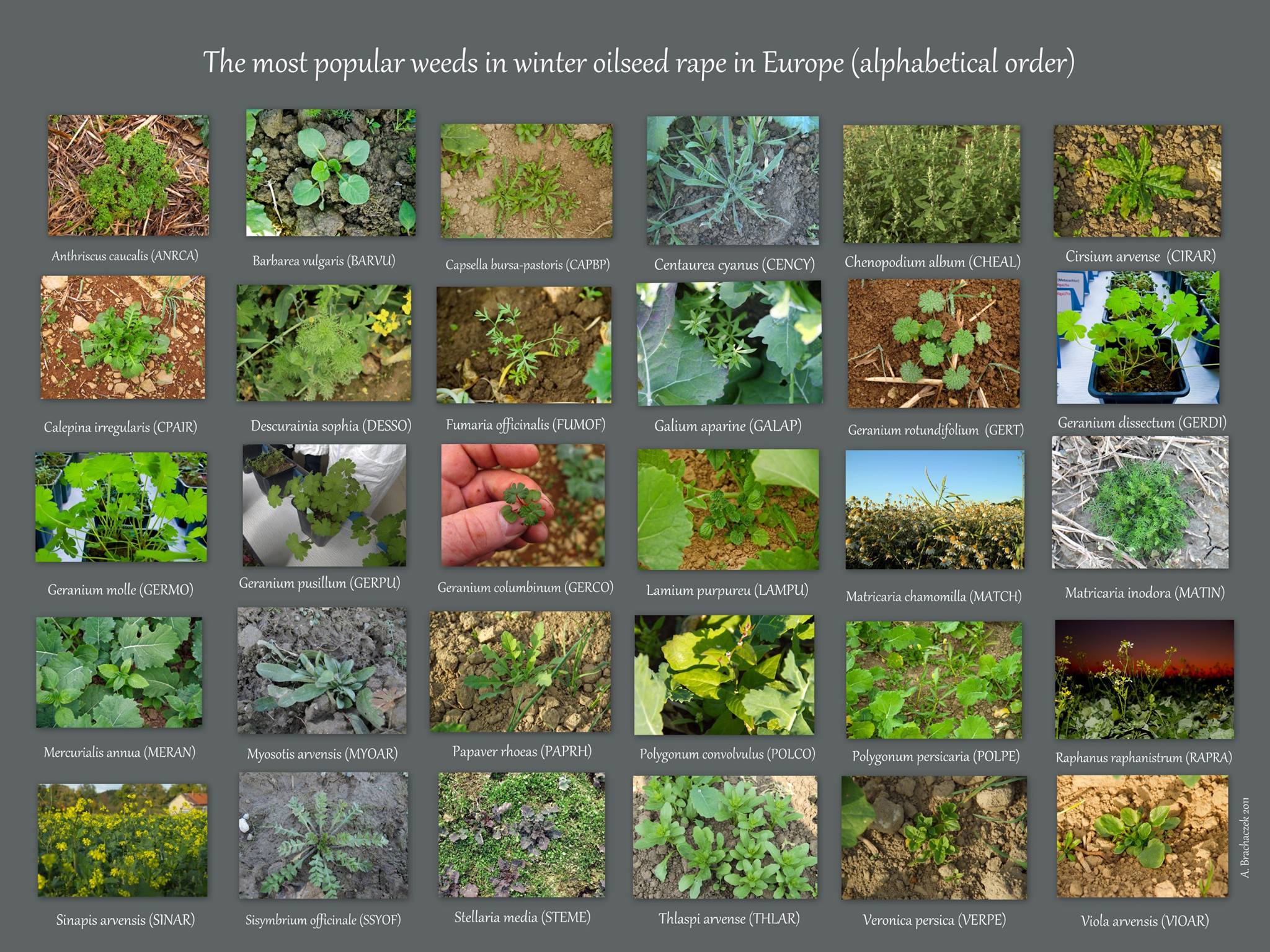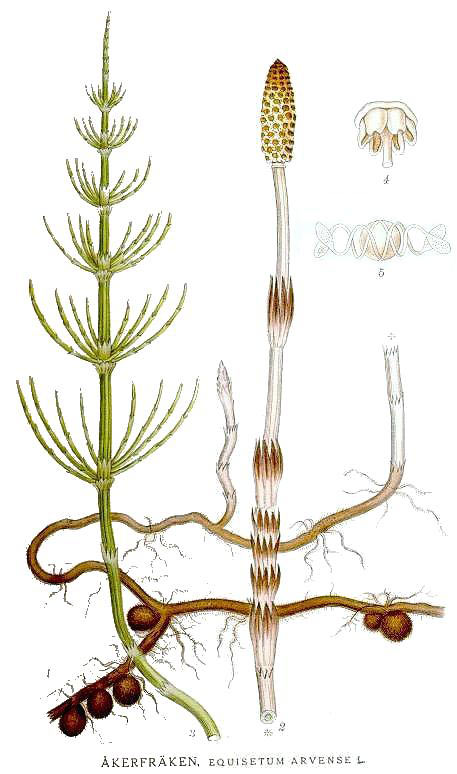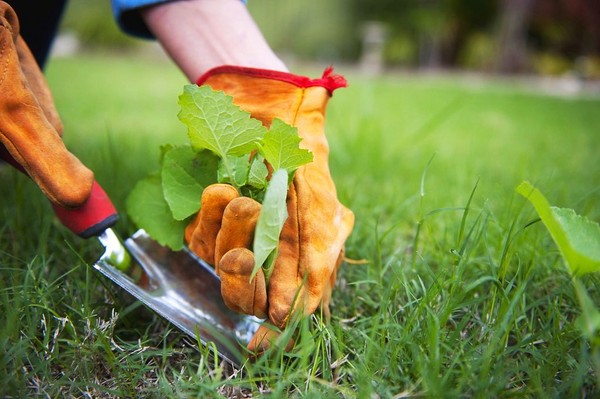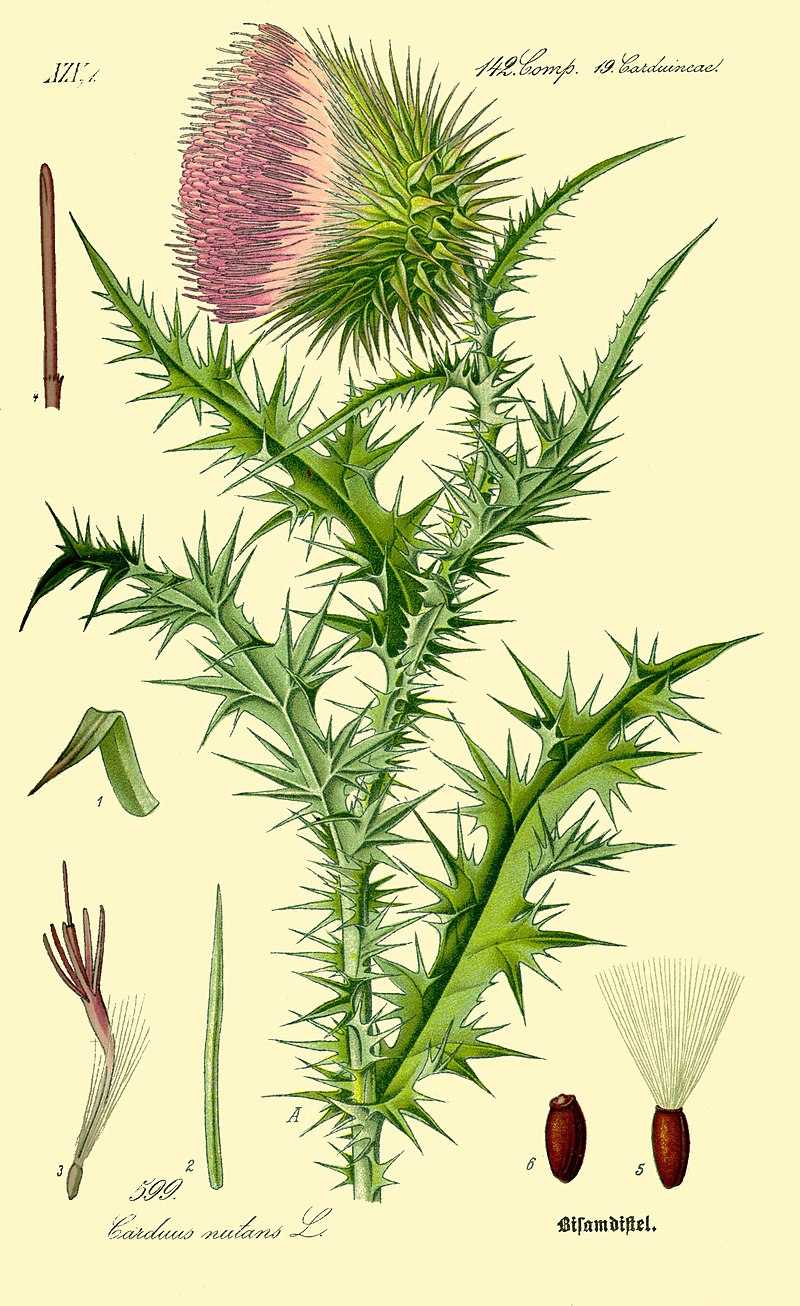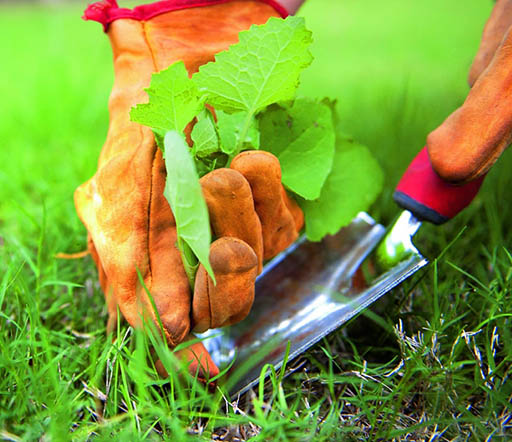
Trzymanie chwastów na dystans
Pozbycie się chwastów to jedno, a niedopuszczenie do tego, by na nowo skolonizowały grządki i rabaty, to drugie. Przyroda nie znosi próżni, dlatego wolne powierzchnie w ogrodzie szybko pokrywają się roślinami. Cała sztuka polega na tym, byśmy to my decydowali, jakie to będą rośliny. Najważniejsze jest, by nie pozostawiać chwastom miejsca, w którym mogłyby się rozwijać. Jeśli więc na oczyszczonej glebie sadzimy rośliny, wolne przestrzenie między nimi pokryjmy mulczem. W ogródku warzywnym najlepszy będzie zielony nawóz.
Uciążliwe chwasty wieloletnie
• Dokładnie przyjrzyjmy się miejscu, które planujemy nabyć z myślą o założeniu ogrodu. Powinno nas interesować nie tylko samo jego położenie, lecz także rodzaj gleby i ewentualne występowanie uciążliwych chwastów wieloletnich, takich jak skrzyp, perz, powój czy rdestowiec japoński. Ich obecność może sprawić, że nowy ogród nie będzie dla nas źródłem spodziewanej radości.
• Inspekcji nie ograniczajmy jedynie do samego ogrodu. Sprawdźmy także dokładnie, co rośnie za płotem. Bliskie sąsiedztwo uciążliwych chwastów oznacza, że raczej prędzej niż później zawitają także do nas.
Mulczowanie
Pokrycie gleby warstwą mulczu o minimalnej grubości 8 cm pomoże zabezpieczyć przed chwastami powierzchnię między roślinami uprawnymi. Mulcz, czy też ściółka, ogranicza dostęp światła do powierzchniowej warstwy gleby, hamując kiełkowanie i rozwój chwastów. Niektóre rodzaje mulczu odżywiają glebę, a wszystkie zmniejszają parowanie wody. Rozwój chwastów najlepiej hamuje warstwa grubego żwiru i kory. Wprawdzie nadal będziemy musieli usuwać chwasty, będą one jednak znacznie słabsze.
Do mulczowania gleby doskonale nadaje się czarna agrowłóknina, przez którą przenika powietrze i woda. Rozkładamy ją na glebie jak dywan i nacinamy otwory, w których sadzimy rośliny. Agrowłóknina w ogrodzie nie prezentuje się najlepiej, dlatego warto przykryć ją grubą warstwą mulczu.
Folia polietylenowa może być stosowana na krótki okres jako osłona przed chwastami, np. w ogródku warzywnym, nie zapewnia jednak odpowiedniej cyrkulacji powietrza i wody. Mulczowanie to dobra metoda dla osób, które prace pielęgnacyjne w ogrodzie pragną ograniczyć do minimum. Sama jednak bardzo nie lubię barier, które odgradzają mnie od gleby. Wolę toczyć boje z chwastami, radować się pięknymi roślinami, które same sieją się w moim ogrodzie i mieć bezpośredni kontakt z grządkami i rabatami.
Rośliny kobiercowe
Niektóre rośliny tworzą zarówno zwarty system korzeniowy pod ziemią, jak i gęsty kobierzec nad ziemią, skutecznie utrudniając wzrost chwastom. Jeśli w jakiejś części ogrodu rosną drzewa i krzewy, a wolne miejsca pomiędzy nimi obsadzimy roślinami kobiercowymi, to praktycznie już po roku ta część ogrodu nie będzie wymagać od nas żadnych zabiegów pielęgnacyjnych.
Rośliny kobiercowe:
Tatarak trawiasty (Acorus gramineus) odm. Variegatus – stanowiska nasłonecznione.
Przywrotnik ostroklapowy (Alchemila mollis) – stanowiska nasłonecznione i półcień.
Bergenia sercolistna (Bergenia cordifolia) – wszystkie typy stanowisk.
Wrzosiec darlejski (Erica x darleyensis) – stanowiska nasłonecznione.
Przymiotno sine (Erigeron glaucus) odm. 'Elstead Pink’ – stanowiska nasłonecznione.
Przytulia wonna (Galium odoratum) – stanowiska zacienione.
Bodziszek korzeniasty (Geranium macrorrhizum), kolankowy (G. nodosum) i Endressa (G. endressii) – wszystkie typy stanowisk.
Kocimiętka Faassena (Nepeta faassenii) – stanowiska nasłonecznione.
Lebiodka pospolita (Origanum vulgare) odm. 'Aureum’ – stanowiska nasłonecznione.
Santolina cyprysikowata (Santolina chamaecyparissus) – stanowiska nasłonecznione.
Rozchodnik okazały (Sedum spectabile) – stanowiska nasłonecznione.
Czyściec wełnisty (Stachys byzantina) – stanowiska nasłonecznione.
Czyściec wielkokwiatowy (Stachys macrantha) odm. Superba – wszystkie typy stanowisk.
Macierzanka tymianek (Thymus vulgaris) — stanowiska nasłonecznione.
Tulbagia fioletowa (Tulbaghia violacea) – stanowiska nasłonecznione.
Kalina Dawida (Viburnum davidii) – stanowiska nasłonecznione i półcień.
Wrzośce tworzą zachwycający dywan, gęsto pokrywający podłoże. Odpowiedni dobór odmian pozwoli uzyskać wspaniały barwny efekt przez cały rok.
Rośliny kobiercowe – wskazówki
• Wybierając rośliny kobiercowe, szukajmy dużych bylin, które będziemy mogli podzielić na dwie lub trzy części. Jeśli nie uda nam się nabyć odpowiednio dużej rośliny, możemy zredukować koszty, kupując mały okaz. Glebę wokół rośliny mulczujemy, by nie dopuścić do rozwoju chwastów, czekamy kilka lat, a następnie roślinę dzielimy i rozsadzamy w około 30–centymetrowych odstępach.
• Niektóre rośliny kobiercowe możemy przycinać, tworząc atrakcyjne formy. Santolinę cyprysikowatą najlepiej przycinać na wiosnę, a macierzankę tymianek latem, po zakończeniu kwitnienia.




